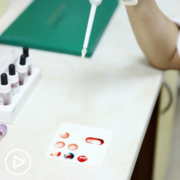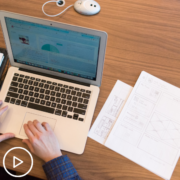Am I Meditating Correctly? Getting the Most Out of Mindfulness from Patient Empowerment Network on Vimeo.
Dr. Jennifer Huberty explains how mindfulness, such as meditation and yoga, can have an impact on your overall health and well-being.
Dr. Jennifer Huberty is an Associate Professor at Arizona State University. She focuses her research on the use of complementary approaches to manage symptoms and improve quality of life for patients living with myeloproliferative neoplasms. More about Dr. Huberty here: chs.asu.edu/jennifer-huberty.
See More From the The Path to MPN Empowerment
Related Programs:
Transcript:
Dr. Huberty:
If someone is wondering if they’re meditating correctly or not, or if two minutes of meditation is enough, if you turn to the science and the literature in terms of how much meditation you need, nobody knows. For every study that says five minutes, there’s a study that says 20 minutes, there’s a study that says an hour. I think it’s really important that the individual gets in touch with “what works for me.”
I think the most important thing is that if you’re sitting for meditation and you choose to sit for meditation, just simply listening to your breath – when you realize you’re off, thinking about what I’m making for dinner tonight or what’s gonna happen over the Thanksgiving holidays with my family, then you just say, “Oh, thinking,” and then you come back to, “Okay, where’s my breath? I’m breathing in, I’m breathing out. I’m breathing in, I’m breathing out.” So, it’s just being able to do that and not say, “Oh my God, I’m not doing this right, this isn’t working for me.” There is none of that. It’s supposed to be nonjudgment in the present moment.
“Oh, the present moment – I’m thinking. Now, in the present moment, I’m gonna go back to my breath.” So, it’s really understanding that, and I think it’s also important for people to understand that you don’t have to be seated in meditation. You can be standing in meditation, you can be laying in meditation, you can be kneeling in meditation. I think with MPN patients, not all sitting positions recommended in meditation might be comfortable. If you need a pillow under your tail, put a pillow under your tail. There’s no rulebook to say how you need to sit in meditation. I think that’s important.
And, there’s also other ways to be mindful. Coloring can be mindful. Walking and exploring the leaves and the landscape can be mindful. So, I think in our studies, yes, we’re encouraging meditation, using an app, but that’s to give people structure, education, and a background about what is meditation, but then, there is room for expansion to other things.
It’s pretty much the same thing with yoga. You’re quieting your mind; you’re focusing on your breath. There’s no rulebook that says you have to move a certain pace. You’re supposed to move with your breath, so if your breath is slow, your pace is slow. The other thing is that there is no right way to do a pose.
So, again, patients wanna know, “Am I doing this pose right?” Well, I can tell you that if you feel good in the pose, nothing is hurting you, your shoulder doesn’t feel like it’s doing something it shouldn’t, your head doesn’t feel like it’s in the wrong direction, and you’re watching the video and looking at what the instructor’s doing, you’re probably doing the pose just fine.
I think we get stuck on “Is this correct or not?” What we wanna be careful of is safety. You don’t wanna be standing on your head and wondering if you’re doing it correctly. You wanna have a basis, and that’s what we do in our programming, is it’s very basic, very foundational poses that you can learn the practice of meditating in the poses.









